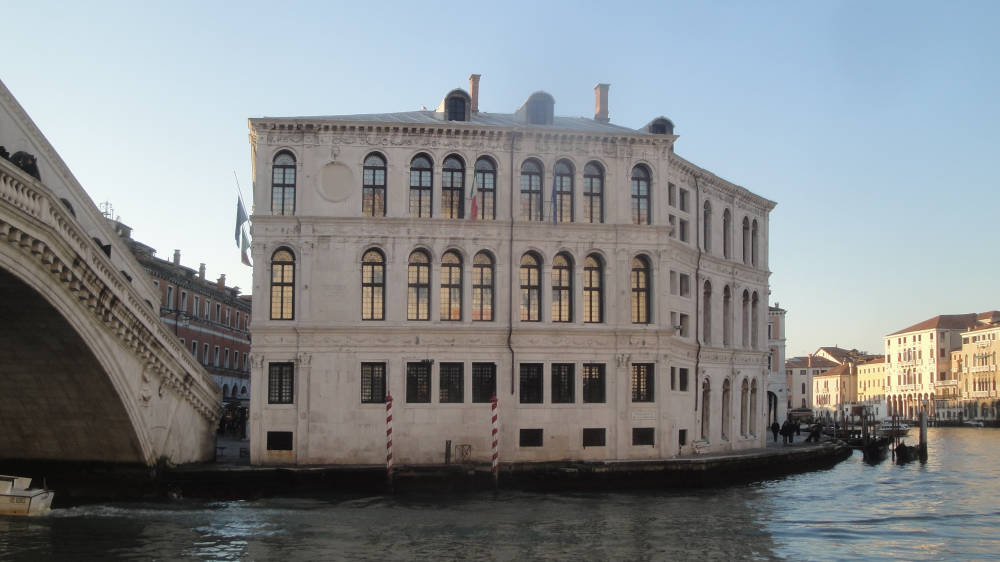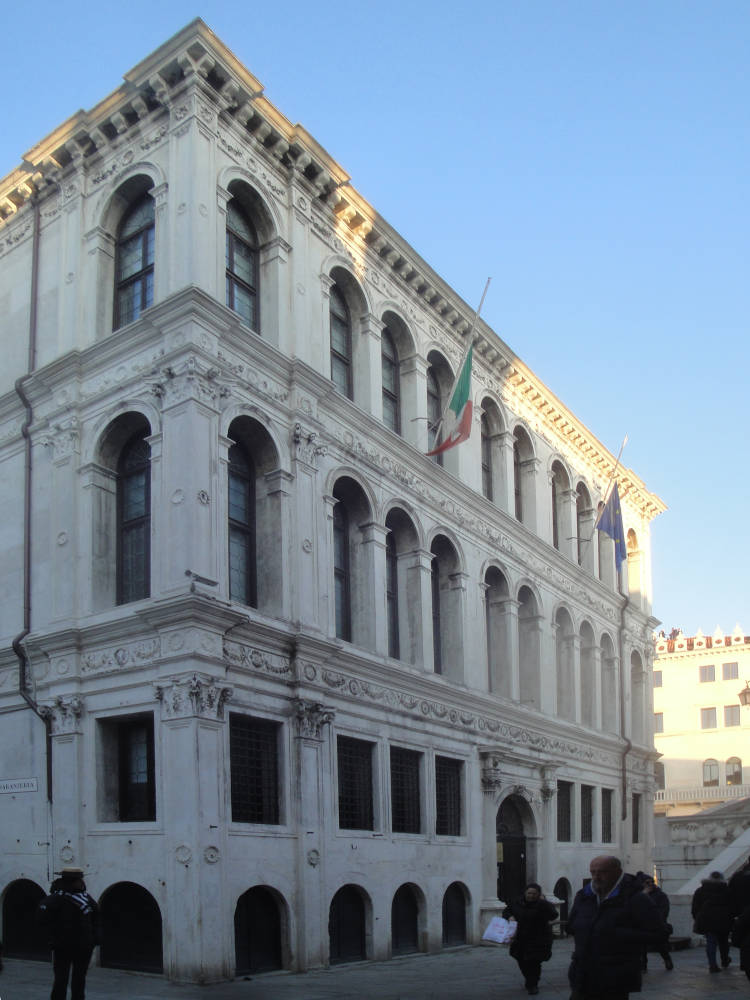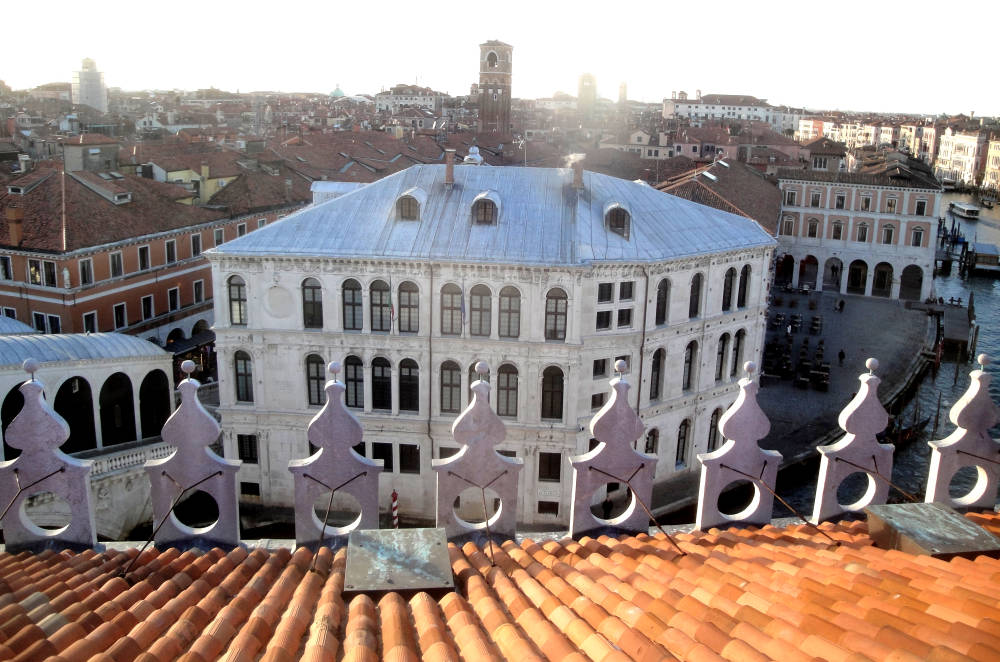
This pentagonal Renaissance palazzo sits adjacent to the Rialto Bridge Click on images to enlarge them. Completed 1488. In The Stones of Venice John Ruskin describes it as “a graceful work of the early Renaissance (1525) passing into Roman Renaissance. Its details are inferior to most of the work of 293 the school. The ‘Camerlenghi,’ properly ‘Camerlenghi di Comune,’ were the three officers or ministers who had care of the administration of public expenses” (11.293-94). According to the Wikipedia article, between 1525 to 1528 it was enlarged “by Guglielmo dei Grigi, who was inspired by the style of Mauro Codussi and Pietro Lombardo. It was the seat of several financial magistrates, including the Camerlenghi whom it takes its name from, the Consuls of the Traders and the Supra-Consuls of the Traders.” The lower floor housed those imprisoned debtors. “Aappropriately, the offices of the Comptroller and Auditor General for the Veneto (this region of northern Italy) are now in the Palazzo dei Camerlenghi.



More of Ruskin's Venice
- The Palazzo Ducale, Venice
- The Scuola de San Rocco
- On the Grand Canal
- Leaving the Grand Canal
- On the way to Venice from the mainland
- Venice: Details and Corners
Photographs 2020. [You may use these images without prior permission for any scholarly or educational purpose as long as you (1) credit the photographer and (2) link your document to this URL in a web document or cite the Victorian Web in a print one.]
Bibliography
Ruskin, John. The Works. Ed. E. T. Cook and Alexander Wedderburn. “The Library Edition.” 39 vols. London: George Allen,1903-1912.
� �
Last mnodified 17 March 2020